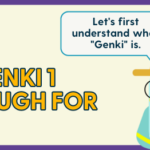[Japanese Learning]
Why can’t you say “多い人” (a lot of people) or “多い雨” (a lot of rain)?
“When I said ‘多い人だね~’ (a lot of people), I was told that’s not how you use it…” “I heard ‘今日は多い雨が降るみたい’ (It seems like there will be a lot of rain today) is incorrect…” “Please explain clearly why you can’t say ‘多い人’ or ‘多い雨’!”
In Japanese, there is an adjective “多い” (oi) which means “many” or “a lot,” but expressions like “多い人” (a lot of people) or “多い雨” (a lot of rain) are not used. This is due to Japanese grammar and differences in meaning.
Below, Eri-san from the JPLT Online Japanese Language School will explain the differences with specific examples for beginners learning Japanese.
■ Basic usage of “多い” (ooi)
“多い” (ooi) is an adjective that expresses a large quantity. However, “多い” (ooi) cannot directly modify certain nouns.
Examples of correct usage of “多い” [ooi]:
- 人が多い (hito ga ooi): This park always has many people (kono kōen wa itsumo hito ga ooi).
- 雨が多い (ame ga ooi): This year’s rainy season has a lot of rain (kotoshi no tsuyu wa ame ga ooi).
Examples of incorrect usage of “多い” [ooi]:
- 多い人 (ooi hito)
- 多い雨 (ooi ame)
saying “多い人” and/or “多い雨” feels awkward in Japanese because it tries to directly connect the idea of “a lot” with “person,” and/or “rain” which isn’t how Japanese usually structures such phrases.
■ Alternative expressions
When you want to use expressions like “多い人” (a lot of people) or “多い雨” (a lot of rain), use different expressions.
Examples:
- たくさんの人 (takusan no hito): Many people came to the concert (konsāto ni wa takusan no hito ga kimashita).
- 大雨 (ooame): Heavy rain fell yesterday (kinō wa ooame ga furimashita).
Note:
たくさん (Takusan): Directly modifies nouns to indicate a large quantity. It also feels more natural and fluent when used with nouns because it specifically conveys the idea of a large amount. It fits the structure of Japanese sentences better.
■ Grammatical background
In Japanese, when an adjective directly modifies a noun, it’s important that the meaning is naturally understood. “多い人” (ooi hito) and “多い雨” (ooi ame) feel awkward because the quantity “多い” (oi) doesn’t naturally connect with the nouns.
Examples:
- “多い人” (ooi hito) is strange: If you want to say there are many people, you say “たくさんの人” (takusan no hito).
- “多い雨” (ooi ame) is strange: If you want to say there is a lot of rainfall, you say “大雨” (ooame) or “雨が多い” (ame ga ooi).
■ Similar examples
There are other expressions that cannot be used for the same reasons.
Examples of incorrect usage of “多い” [ooi]:
- 多い食べ物 (ooi tabemono)
- 多い問題 (ooi mondai)
Examples of correct usage:
- たくさんの食べ物 (takusan no tabemono): There were many foods at the Christmas dinner (kurisumasu dinā ni wa takusan no tabemono ga narabimashita).
- 多くの問題 (ooku no mondai): There were many problems with that project (sono purojekuto ni wa ooku no mondai ga arimashita).
■ Summary
Why can’t you say “多い人” (a lot of people) or “多い雨” (a lot of rain)?
“多い” (oi) is an adjective that indicates a large quantity, but it cannot directly connect with certain nouns. In such cases, using expressions like “たくさんの” (takusan no) or “多くの” (ooku no) will result in more natural Japanese. Understanding these differences will help you speak more naturally.




